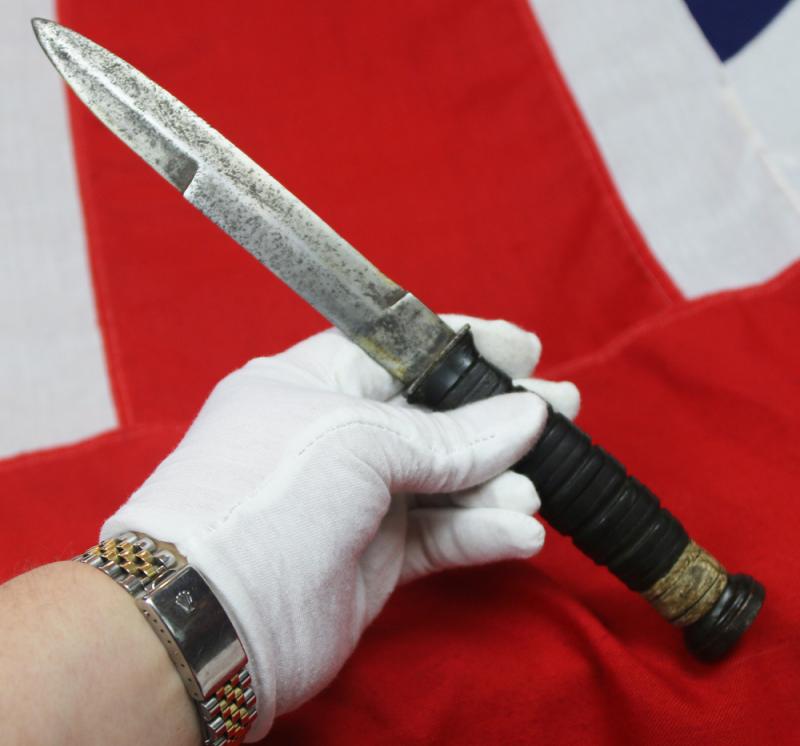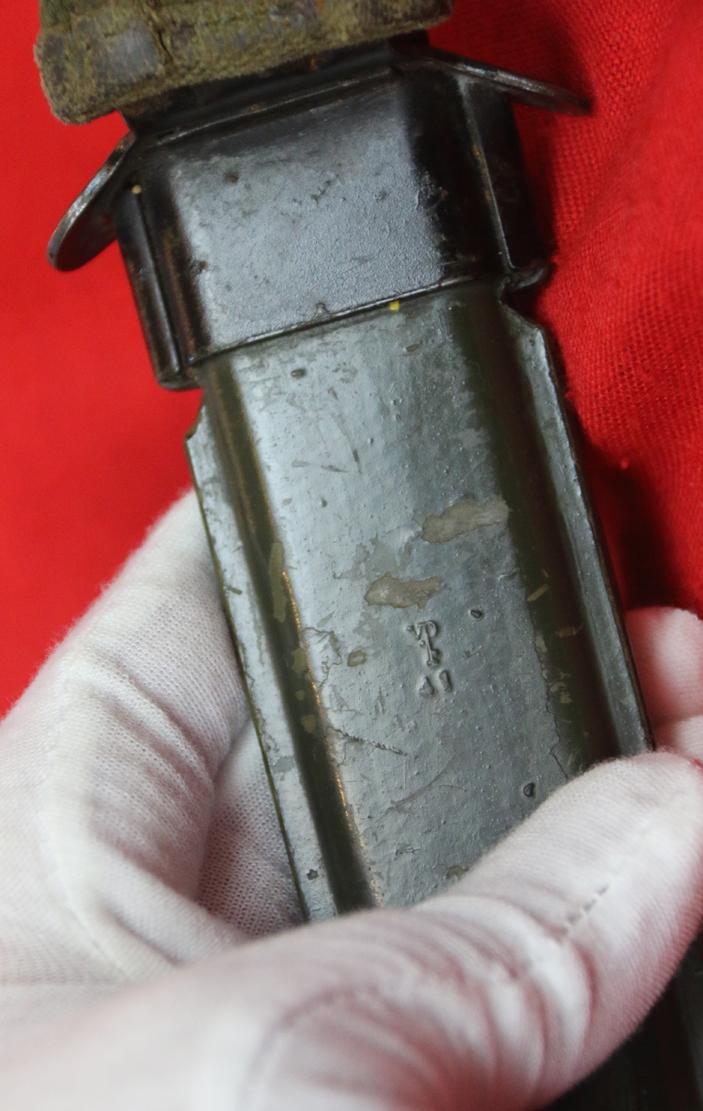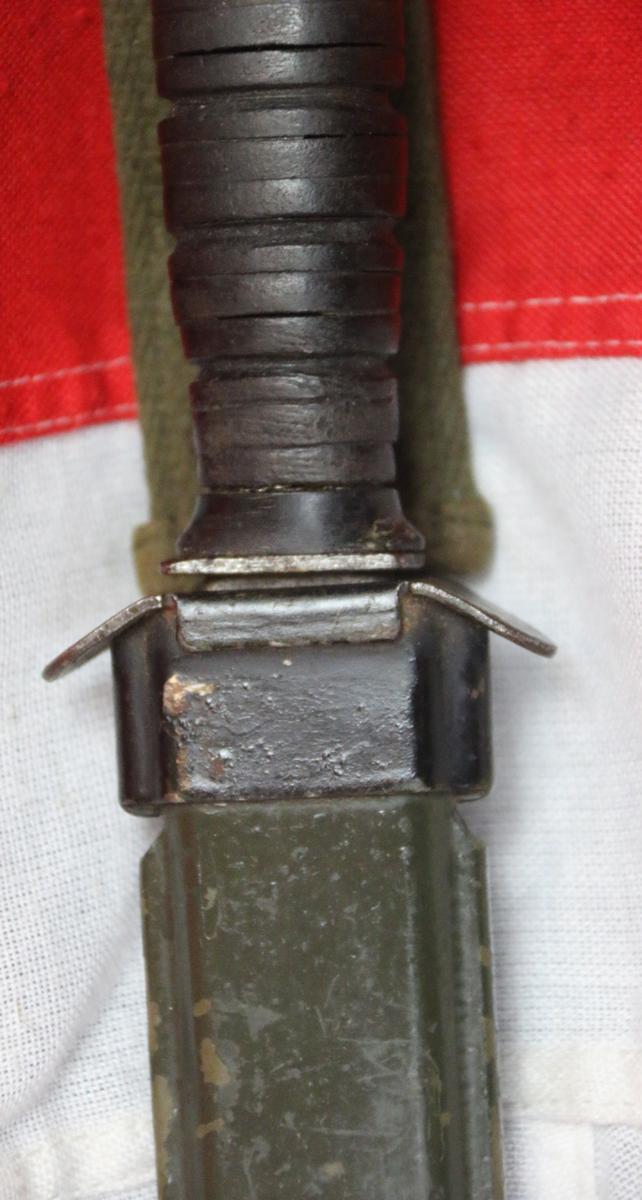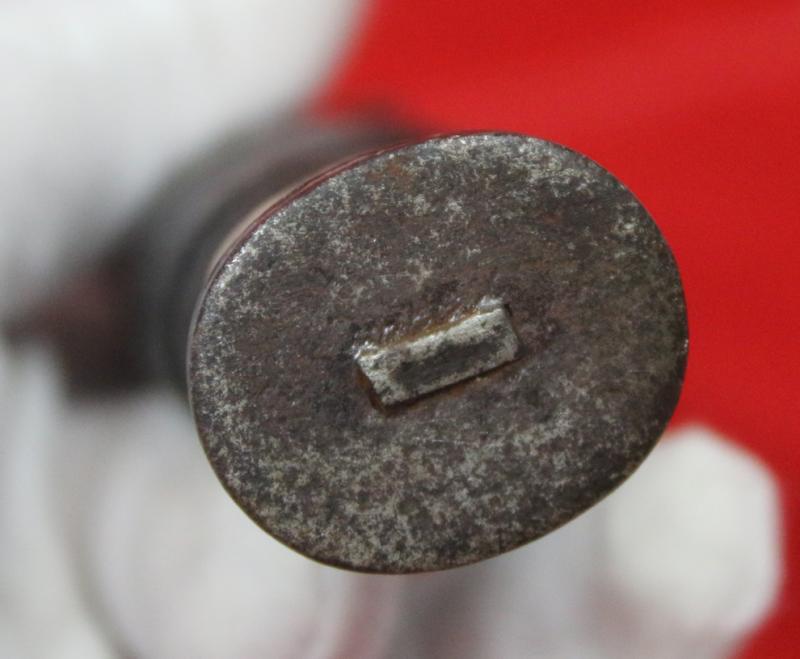An American WW2, M3 Pattern, Fighting Knife, in its Beckwith Manufacturing Company, Victoria Plastics, M8 Scabbard
The scabbard has the VP mark over a 41 on the scabbard reverse side. It is the logo of the Victory Plastics Division of the Beckwith Manufacturing Company. The number is believed to be a mould identification number for quality control purposes. the metal throat has very old applied black surface protective paint which may reveal a US M8 BMCO stamp beneath, but we would not recommend removing it, as it is part of its character and history. One can see the layered cotton ducking and Tenite under the surface of the scabbard green paint on the both the front and reverse very easily. Metal tip to scabbard with lanyard hole,
The traditional double edged bladed M3 has no maker markings, it has a usual stacked leather washer grip but with a three washer, composition material, replaced top section. possibly through combat damage. The crossguards have both been custom shortened and squared off etc, likely accomplished when the three top washers were replaced. It came from a WW2 and Korean War American US Marine veteran who settled here and married in the UK in the 1960's. The blade has grey overall old surface corrosion traces. We have no knowledge of its past service use anymore, but one can see it has certainly seen use for the purpose for which it was designed. An interesting and speculative vintage combat piece, with old repairs etc. but none the less interesting for that
When the United States adopted the M3 fighting knife, they also adopted the M6 leather sheath to carry the new combat knife in. Despite having been one of the first militaries to adopt cloth field gear in place of leather belts, cartridge cases, etc., the U.S. military still used leather goods extensively for holsters, knife handles, and other materials. While perfectly fine for hunting knives, leather sheaths (as well as other leather products) have a tendency to mildew and rot in wet weather conditions like those found in the trenches of WWI or the jungles of the Pacific. As reports from the field came in, the shortcomings of the leather M6 soon became apparent. The Ordnance Department began looking for an alternative.The new scabbard consisted of a composite plastic material made from a combination of layered cotton ducking and Tenite. By heat treating the combination, it could be pressure moulded into a solid shape.The new scabbard was able to withstand temperatures fluctuations from 170 degrees Fahrenheit to 45 below. Superior to the Model 1910 in durability, the Army Ordnance Department adopted it as the M3 in the summer of 1941. To meet the contract, Beckwith purchased a plant in Hudson, Mass. Victory Plastics was born.
Beckwith began production of replacement for the M6 sheath, as well. Incorporating the materials produced at Victory Plastics, the new M8 had a metal throat, stamped “U.S. M8” and “BMCO” (for Beckwith Manufacturing Company). The “ears” of the throat were turned down to accommodate the angled hilt on the M3 knife.
Code: 24911
325.00 GBP








